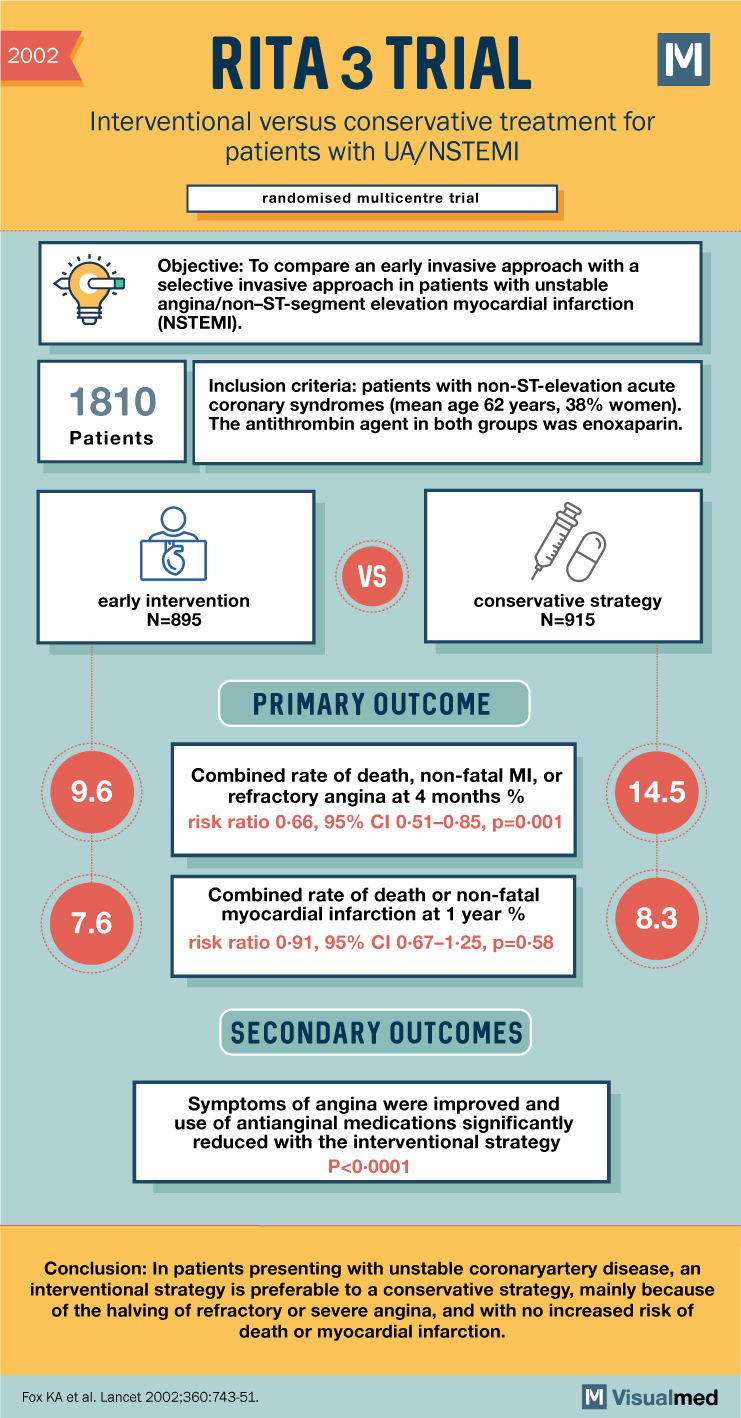
RITA 3 Trial Summary
Background:
- Current guidelines recommend either an interventional strategy (angiography followed by revascularization) or a conservative strategy (ischemia-driven or symptom-driven angiography) for patients at moderate risk of death from unstable coronary artery disease.
- The aim was to compare the effectiveness of an interventional strategy versus a conservative strategy in these patients.
Methods:
- Randomized multicenter trial involving 1810 patients with non-ST-elevation acute coronary syndromes.
- Mean age of patients was 62 years, with 38% women.
- Patients were assigned to either an early intervention or conservative strategy.
- Both groups received enoxaparin as the antithrombin agent.
- Coprimary endpoints: combined rate of death, non-fatal myocardial infarction, or refractory angina at 4 months; and combined rate of death or non-fatal myocardial infarction at 1 year.
- Analysis was conducted based on intention to treat.
Findings:
- At 4 months, the intervention group had a lower incidence of death, myocardial infarction, or refractory angina compared to the conservative group (9.6% vs. 14.5%; risk ratio 0.66, 95% CI 0.51-0.85, p=0.001).
- The difference was primarily due to a significant reduction in refractory angina in the intervention group.
- There was no significant difference in the rates of death or myocardial infarction between the two groups at 1 year (7.6% vs. 8.3%; risk ratio 0.91, 95% CI 0.67-1.25, p=0.58).
- The interventional strategy led to improved angina symptoms and reduced use of antianginal medications (p<0.0001).
Interpretation:
- In patients with unstable coronary artery disease, an interventional strategy is preferred over a conservative strategy.
- The interventional approach significantly reduces the incidence of refractory or severe angina without increasing the risk of death or myocardial infarction.
- Patients benefit from improved angina symptoms and a decreased need for antianginal medications.
Key Takeaways:
- The RITA 3 trial compared an interventional strategy to a conservative strategy in patients with unstable coronary artery disease.
- Interventional strategy resulted in a lower incidence of death, myocardial infarction, or refractory angina at 4 months.
- No significant difference in death or myocardial infarction rates between the two groups at 1 year.
- The interventional strategy improved angina symptoms and reduced the use of antianginal medications.
- These findings support the preference for an interventional approach in managing unstable coronary artery disease.